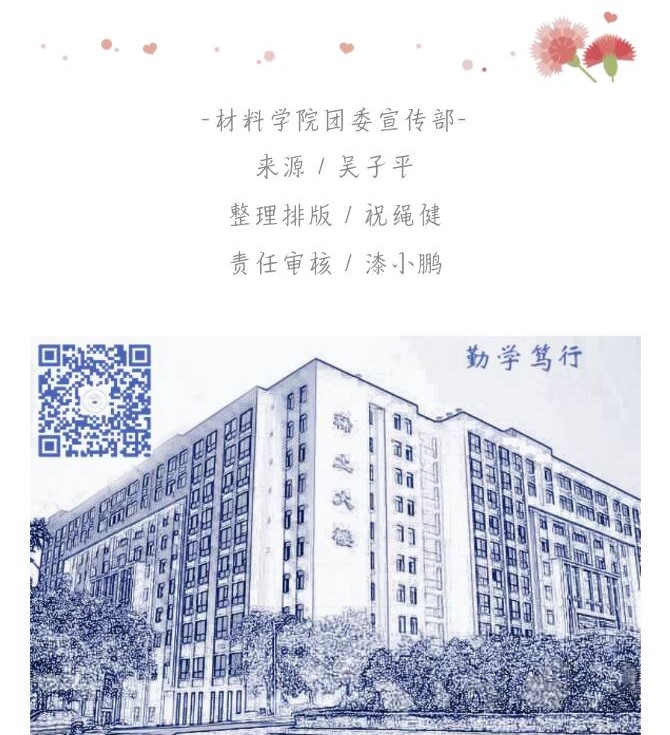
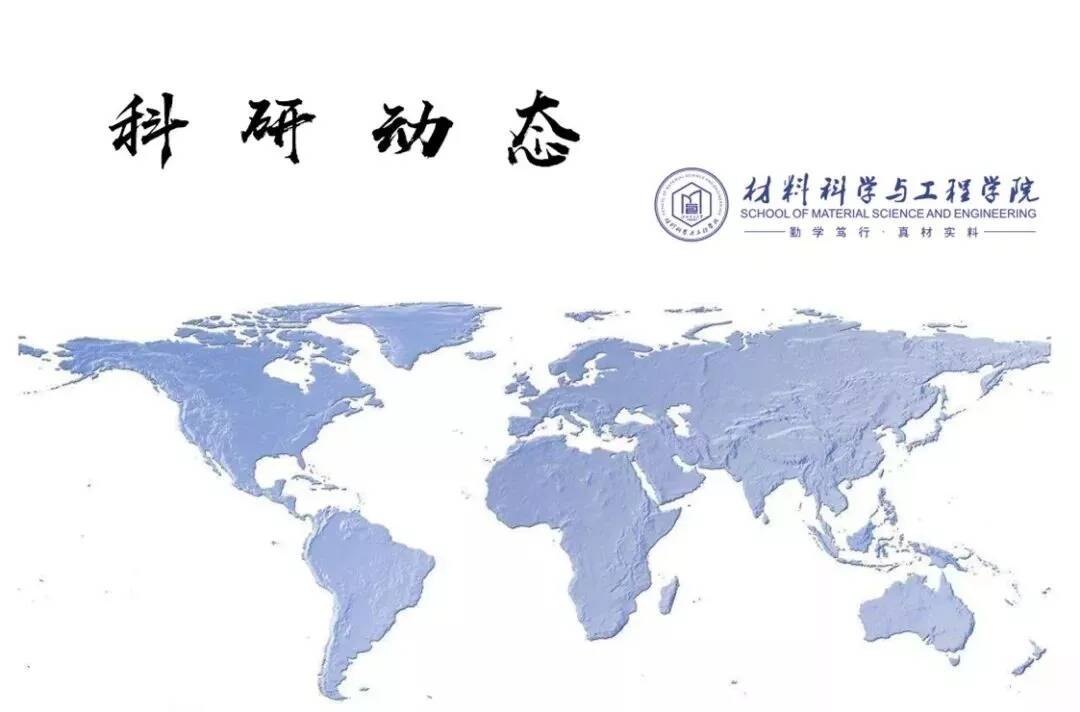
材料学院科研动态微信专栏提供科研工作者关心的各类学术与生活相关资讯与信息,帮助学院内外科研工作者更好的发表英文学术文章,助力于中国学术之崛起。
材料学院科研动态第八期
近日,江西理工大学材料科学与工程学院碳纳米材料团队师生在国际顶级期刊Advanced Energy Materials (IF=21.875)发表论文,题为“Engineering the Surface/interface of Horizontally Oriented Carbon Nanotube Macrofilm for Foldable Lithium-ion Battery withstanding Variable Weather”。江西理工大学为论文第一完成单位。

引言
论文题目:
《Engineering the Surface/Interface of Horizontally Oriented Carbon Nanotube Macrofilm for Foldable Lithium-Ion Battery Withstanding Variable Weather》
DOI: 10.1002/aenm.201802349
论文链接:
https://onlinelibrary.wiley.com/doi/full/10.1002/aenm.201802349
通讯作者及第一作者:
江西理工大学吴子平教授和华中科技大学夏宝玉教授是该论文通讯作者,我校硕士生刘亭、张明为该工作共同第一作者。
引言:
锂离子电池(LIBs)是目前最常见的储能器件,随着可穿戴电子设备的兴起,电池的柔性化是实现设备可穿戴的基础,而柔性集流体是LIBs实现柔性的关键。当前LIBs集流体主要为铜箔和铝箔,限制了电池的可变形性;此外,电池会随着天气的变化出现电化学性能波动,如在寒冷的天气电池甚至停止工作,这是可穿戴电子器件在外表穿戴必须面临的一个现实问题,但却很少被关注。
成果简介
该工作以纸为基质,通过表界面改性实现了定向碳纳米管膜(HUCNMs)规模化制备。所得HUCNMs面积达~1800 mm×1000 mm,将其用作LIBs正负极集流体,LIBs展现出卓越的柔性、电化学稳定性和倍率性能;单层全电池容量高于700 mAh,比容量160 mAh/g,在模拟不同温度(-40~70 oC)及低压条件下,电池仍保持稳定的电化学性能,显示出优异的耐候性。
图文导读

△ Figure 1. a) Photograph (1800 × 1000 mm2),b) qualitative demonstration of film folding, c) SEM, d) TEM, and e,f) HRTEM images of HUCNMs.
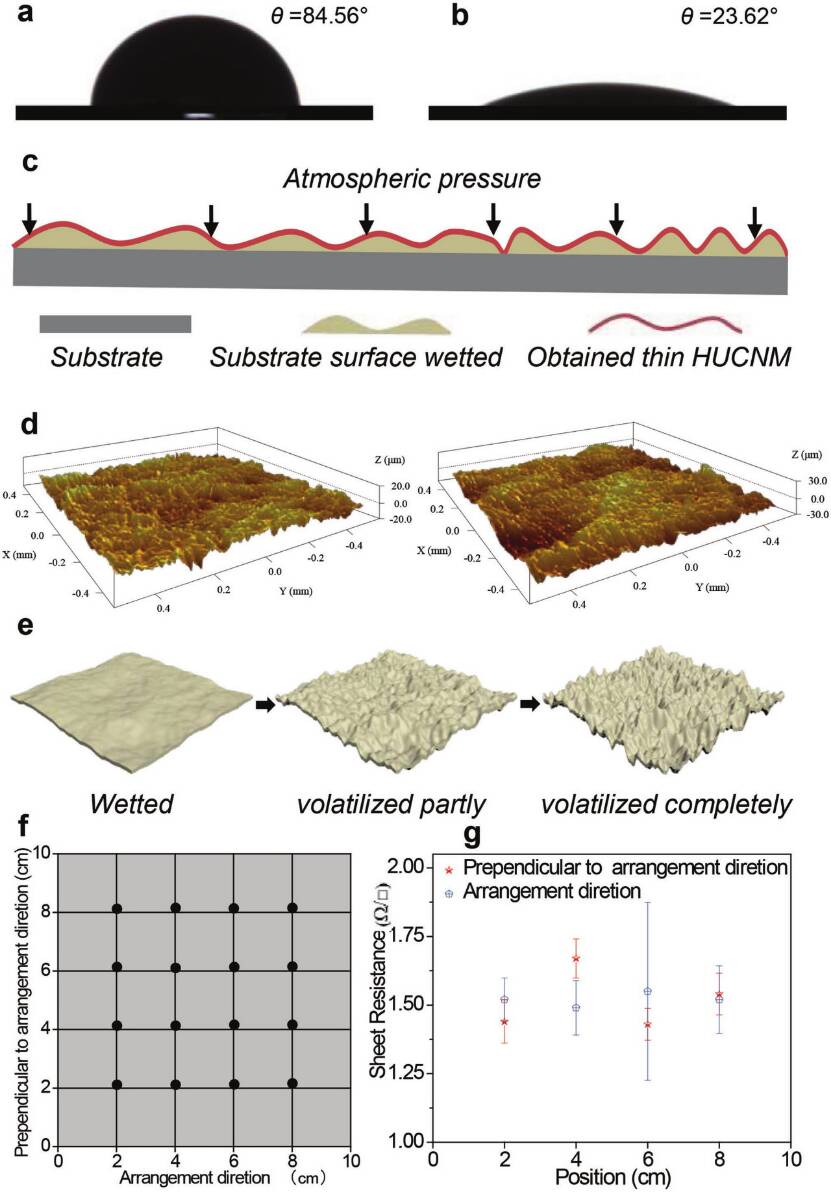
△Figure 2. Static contact angle measurements: a droplet of deionized a) water and b) ethanol/water placed on surface of copy paper, c) force analysis of CNT socks constricted onto copy paper; Surface morphology of copy paper d) before (left) and after(right) HUCNM detached, e) schematic diagram of surface change of copy paper before, after sprayed, and volatilized droplets of the adsorbent, f) schematic diagram, and g) mean sheet resistance measurement at different positions across arrangement and perpendicular to the arrangement directions of the CNT bundles.
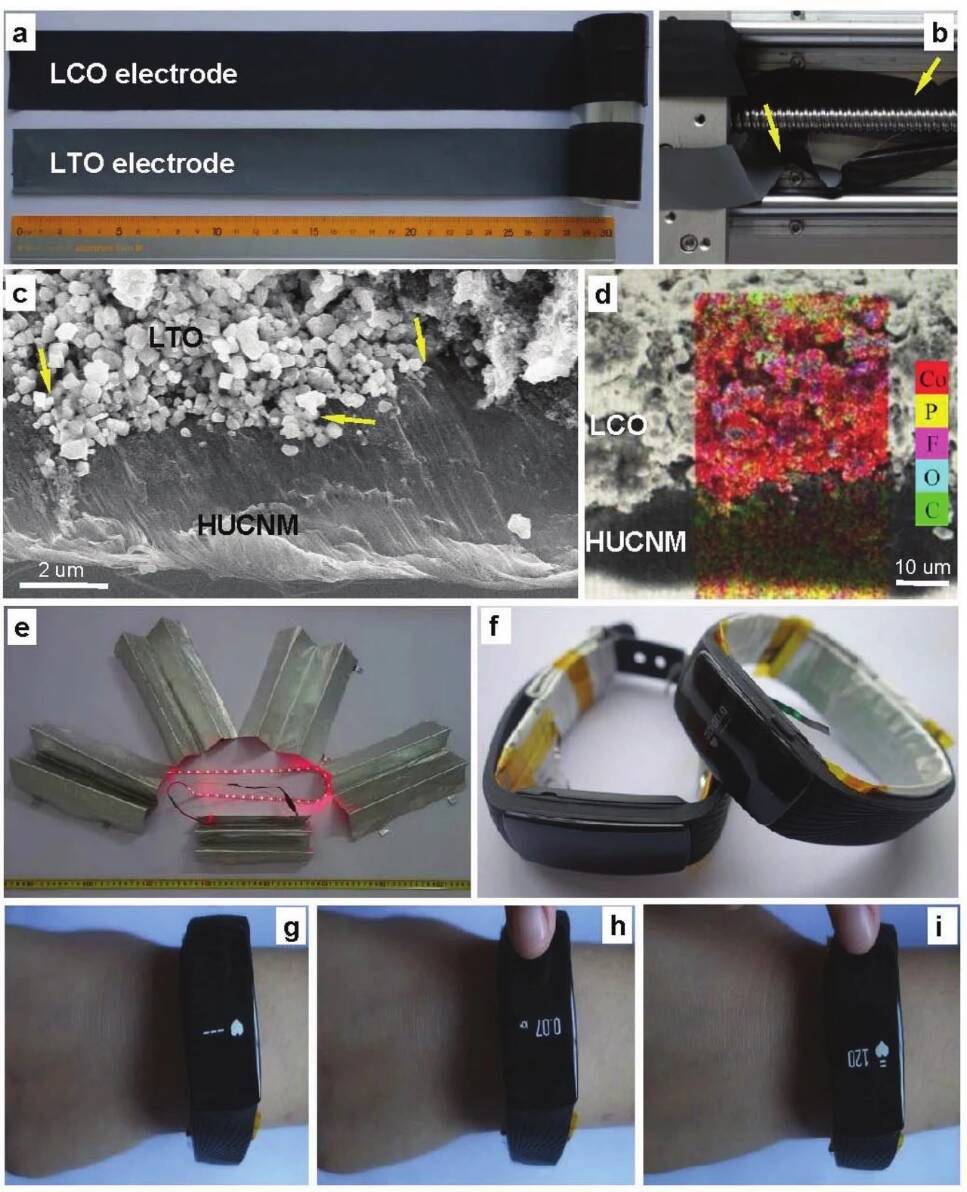
△ Figure 3. The morphology of HUCNM-based electrodes and fully foldable battery, a) the photograph of the electrodes, b) the electrodes deform back and forth between a linear guide system, c) SEM image of LTO-HUCNM interface and d) EDS of LCO-HUCNM electrode, e) a batch of full LIBs with size of about 25 cm × 25 cm were fabricated, f) two smart bracelets powered by the foldable LIBs as wristband, g–i) qualitative demonstration of the smart bracelet works properly after it powered by the foldable battery.
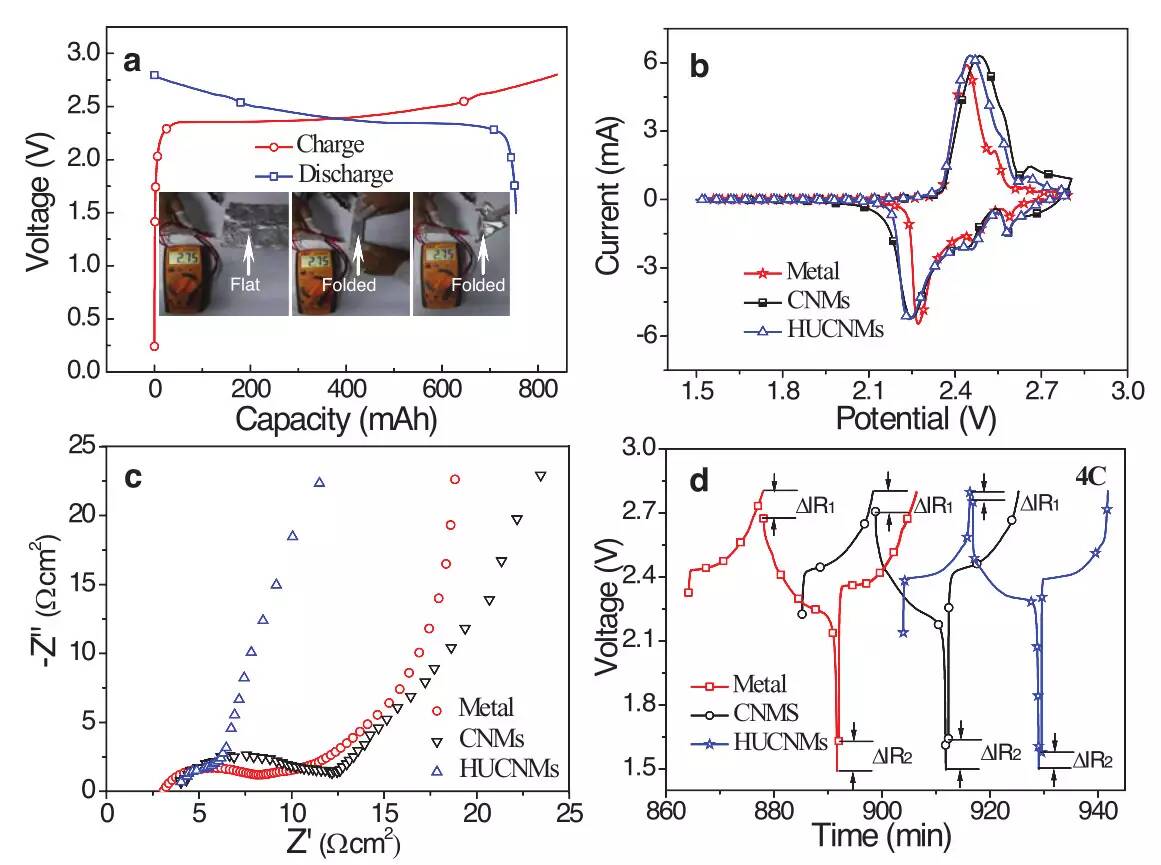
△ Figure 4. a) Galvanostatic charge/discharge profiles of the HUCNM-based battery (inset shows the working voltage of the foldable battery at flat and folded states), b) cyclic voltammograms, c) Nyquist plots, and d) galvanostatic charge/discharge at 4C of full batteries based on HUCNMs, CNMs, and metal collectors.

△ Figure 5. a) Cycling and b) rate performance of foldable batteries based on HUCNMs, CNMs, and metal between the flat and foldable states, electrochemical performance of foldable battery working at c) changeable temperature (from −40 to 70 °C), and d) under vacuum environment.
课题组其他研究进展
此外,课题组近期还研发了基于碳纳米管的柔性线缆型电池,发表在Small (影响因子9.598, DOI: 10.1002/smll.201800414),所得电池体积能量密度达215 mWh /cm3,为现有文献报道最高值7倍以上,这些展示了碳纳米管在柔性能源存储领域极大的应用潜力。
论文链接:
https://onlinelibrary.wiley.com/doi/abs/10.1002/smll.201800414

图文导读
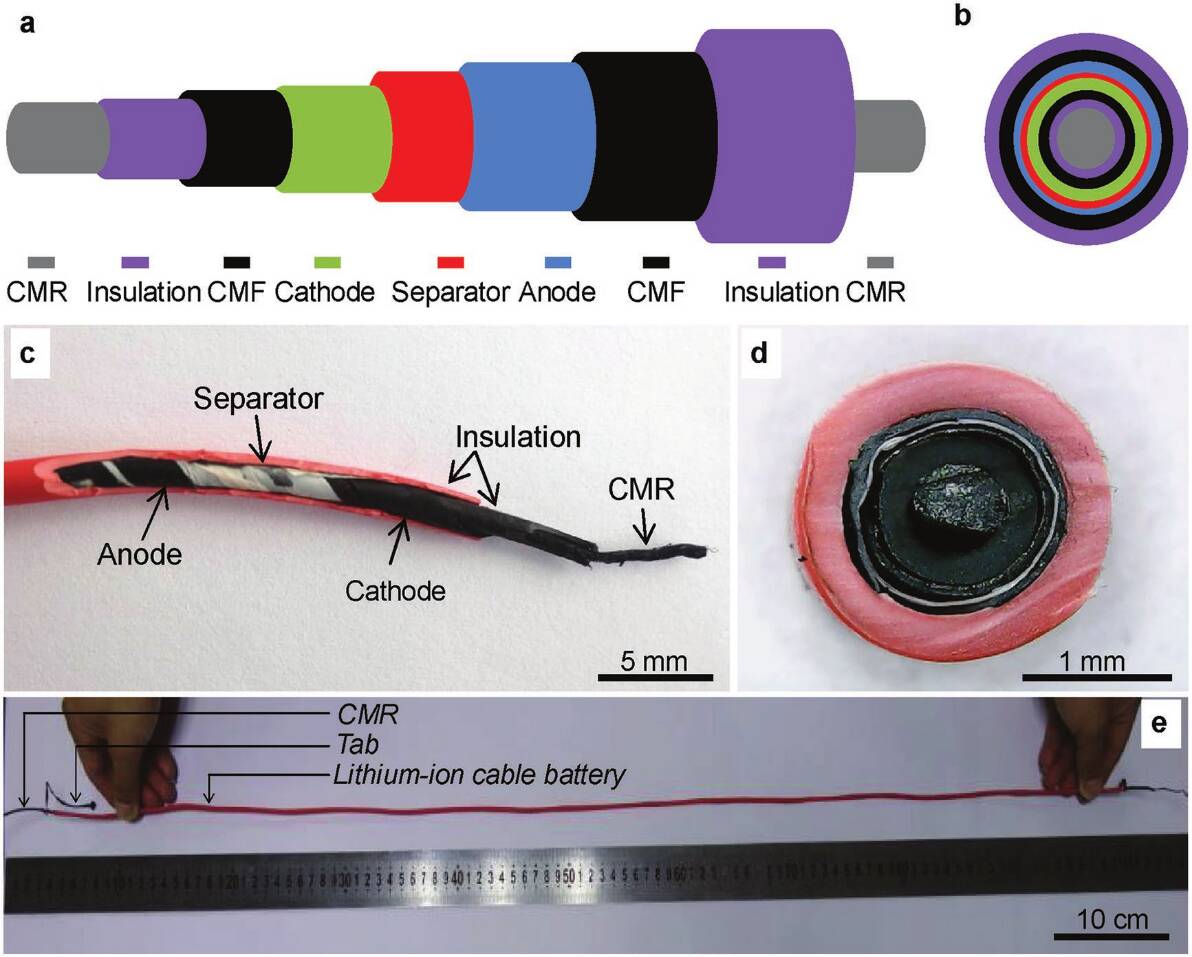
△Figure 1. Schematic diagram and prototype of the lithium-ion cable battery. a) Side view; b) cross-section; c) the side-view photograph of the lithium-ion cable battery; d) cross-section; and e) the prototype of lithium-ion cable battery including CMR.

△Figure 2. The morphology of CMR, CMF, and after active material coated. a) The photograph of CMR and b) CMF; c) LTO with ultrahigh-tap density coated on the CMF; d) optical microscopy and e) SEM image of the LTO-CMF electrode without cracks after being folded in half; and f) optical microscopy and g) SEM image of LTO-Cu-formed cracks after being folded.
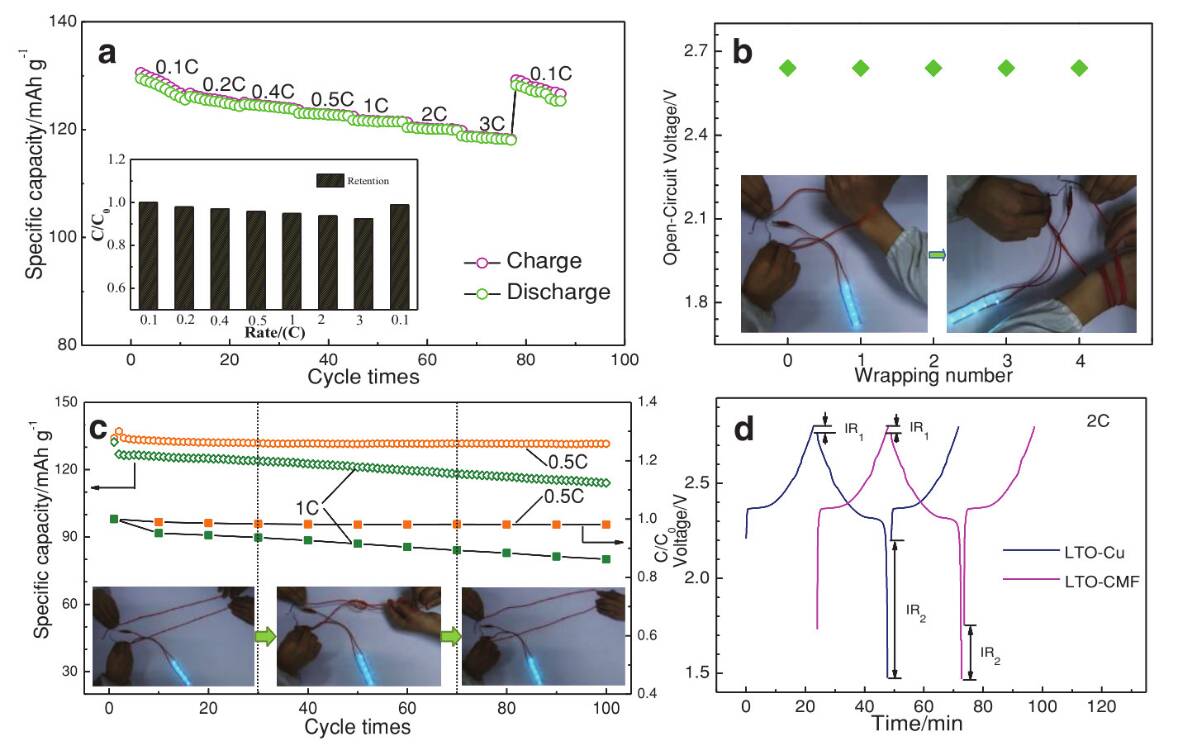
△ Figure 3. The electrochemical performance of the lithium-ion cable battery. a) Rate performance of the cable and the inset shows the dependence of specific capacity on current rate; b) the dependence of the open-circuit voltage on wrapping number of the battery, correlation of C and C 0 to the specific capacities of different cycle and the first cycle; c) cycling performance and the dependence of specific capacity on the number of cycle times of the device between releasing and twisting states; and d) galvanostatic charge/discharge of the LTO-CMF and LTO-Cu electrodes at charge/discharge rates of ≈2 C.
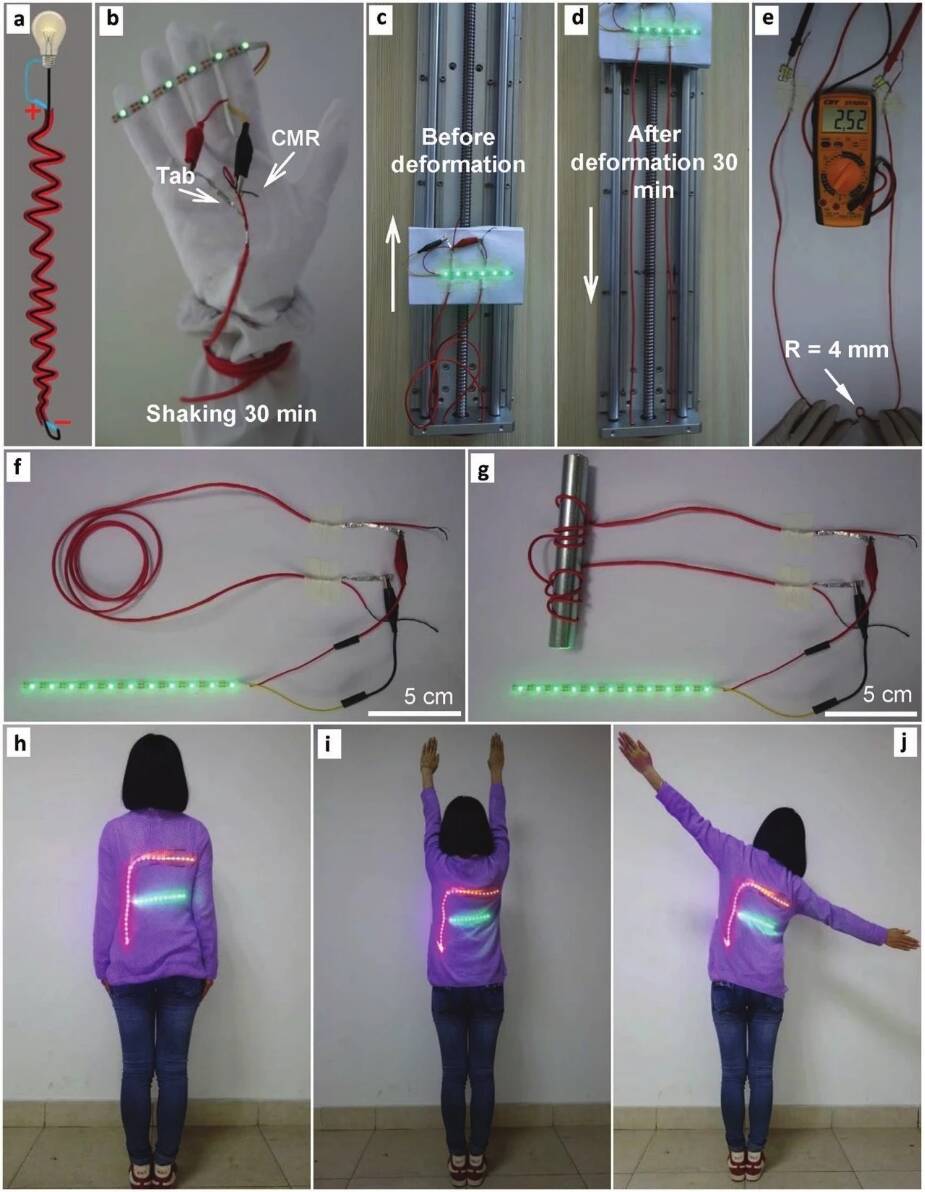
△Figure 4. The demonstration of the operation, flexibility, and wearability of the lithium-ion cable battery. a) The schematic diagram and b) connection at the same side between battery; c,d) the LIB deforms in a linear guide system; e) the bending radius of the LIB at working state was measured; f) the battery at free state and g) twisted on a rod; and h–j) LED lights and the wearable lithium-ion cable battery on the body during exercises.
吴子平教授代表性成果简介:
近年来主持国家及省部级科研项目20余项,在Adv. Energy Mater., Small, ACS Nano, Carbon, J. Power Sources, Script Mater., Appl. Phys. Lett.,等期刊发表论文40余篇,申请发明专利12余项,授权8项,以负责人身份获得了第十八届中国科协年会全国科技工作者创新创业大赛银奖,指导学生参加第三届互联网+全国大学生创新创业大赛银奖等。通过基础研究工作的开展,实现了碳纳米材料及其在穿戴电池特定领域的初步应用,目前已将相关技术与部分专利实现商业转让,金额超1200万元。目前是Energy & Environ. Sci., ACS Applied Materials & Interfaces, Carbon等10多种国际科技期刊论文评审人。
